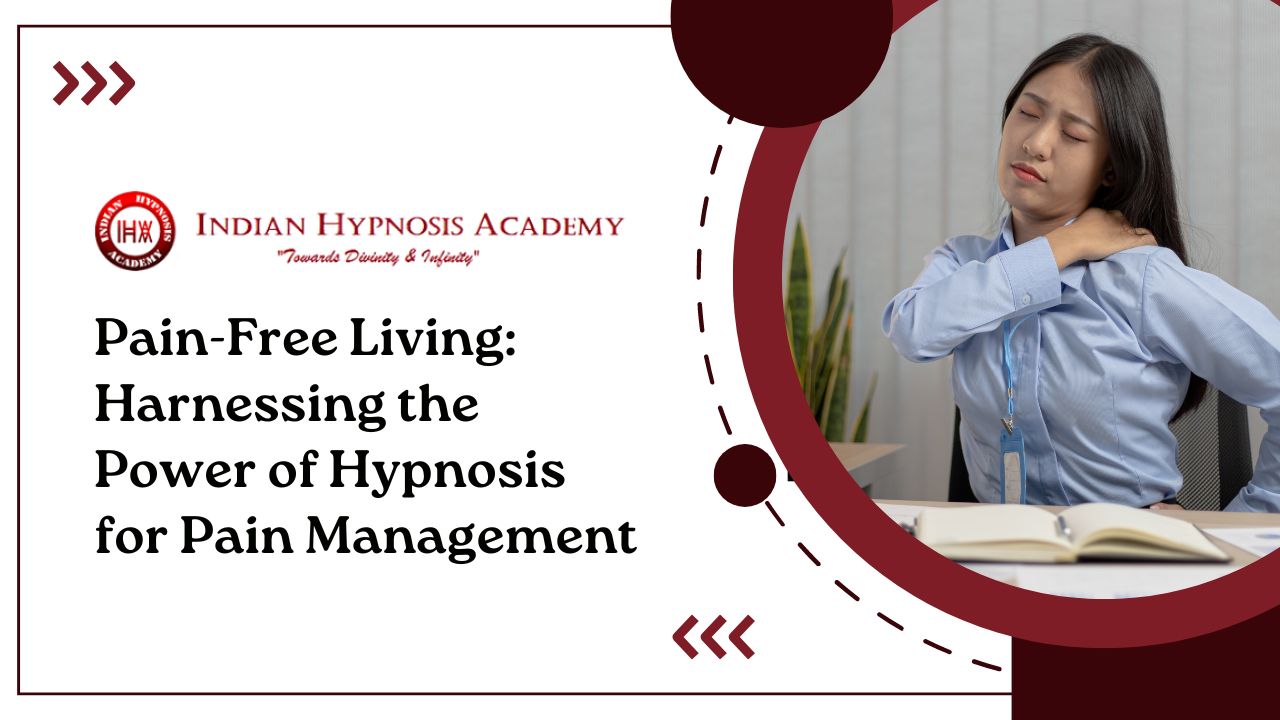Welcome to a journey towards pain-free living! Imagine a life where chronic pain no longer dictates your every move. In this blog post, we will explore the powerful world of hypnosis and how it can be harnessed as a tool for effective pain management. Get ready to unlock the potential of your mind-body connection and discover a path to relief that is natural, holistic, and empowering.
Understanding the Mind-Body Connection
The mind-body connection is a fascinating and intricate relationship that influences our overall well-being. Our thoughts, emotions, and beliefs can have a profound impact on how we experience physical sensations, including pain. When we are stressed or anxious, our bodies can respond with heightened sensitivity to pain signals.
Research has shown that practicing mindfulness and relaxation techniques can help calm the nervous system and reduce the perception of pain. By tuning into our bodies and being present in the moment, we can cultivate a greater sense of control over our physical experiences. This awareness allows us to better understand the interconnectedness between our minds and bodies.
By acknowledging this interplay between mental states and physical sensations, we open up new possibilities for managing pain more effectively. Embracing holistic approaches like hypnotherapy can further enhance this mind-body synergy, offering a unique avenue for alleviating discomfort and promoting healing from within.
What is Hypnosis?
Have you ever wondered what hypnosis really is? It’s not about mind control or magic tricks as often portrayed in movies. In reality, hypnosis is a natural state of focused attention where the mind becomes highly receptive to suggestions. During this relaxed state, the conscious mind takes a step back, allowing the subconscious to be more open and responsive.
Hypnotherapy involves guiding individuals into this trance-like state to help them tap into their inner resources for positive change. By accessing the deeper layers of the mind, hypnosis can address various issues, including pain management, smoking cessation, weight loss, anxiety relief, and much more.
Through skilled guidance from a certified hypnotherapist, individuals can harness the power of their own minds to make lasting improvements in their lives. So next time you hear about hypnosis, remember it’s all about unlocking your inner potential through focused relaxation and suggestion.
How Hypnosis Can Help with Pain Management
Imagine a world where pain relief is just a state of mind away. Hypnosis, often misunderstood and underrated, has the power to transform how we perceive and experience pain. By tapping into the subconscious mind, hypnotherapy can help alleviate physical discomfort by shifting our focus and altering our response to sensations.
Through deep relaxation and guided imagery, hypnosis can rewire neural pathways associated with pain perception. It acts as a natural analgesic, releasing endorphins that provide relief without relying on medication. The calming effects of hypnosis not only reduce physical pain but also lower stress levels, which are known to exacerbate discomfort.
By harnessing the innate power of our minds through hypnosis, we open up new possibilities for managing chronic conditions like migraines, fibromyalgia, or arthritis. It’s about empowering ourselves to take control of our well-being in a holistic way that goes beyond conventional treatments.
So why not explore this alternative approach to pain management?
The Science Behind Hypnotherapy for Pain Relief
Have you ever wondered how hypnotherapy works to alleviate pain? Let’s delve into the science behind this intriguing practice. When a person is hypnotized, their brain waves shift into a state of heightened suggestibility. This altered state allows the hypnotherapist to bypass the conscious mind and access the subconscious where pain signals are processed.
Studies have shown that during hypnosis, certain areas of the brain associated with pain perception become less active, leading to a decreased sensitivity to discomfort. Additionally, hypnosis can help regulate neurotransmitters like endorphins, which are our body’s natural painkillers.
By tapping into the power of suggestion and visualization, hypnotherapy can reframe how we perceive and experience pain. It can also help lower stress levels and improve overall well-being. The scientific basis for using hypnosis in pain management continues to be explored and validated through research studies worldwide.
Incorporating this holistic approach alongside traditional medical treatments may offer a comprehensive solution for individuals seeking relief from chronic pain conditions.
Techniques and Tools Used in Hypnotherapy
In the world of hypnotherapy, various techniques and tools are utilized to help individuals manage pain effectively. One common method is called visualization, where the therapist guides the patient to imagine a peaceful place or scenario to distract from the sensation of pain.
Another technique often used is progressive muscle relaxation, where the individual tenses and then releases different muscle groups in their body to promote physical relaxation and reduce discomfort.
Guided imagery involves using vivid mental images to create positive experiences that can alter perceptions of pain and promote feelings of well-being. This technique can be particularly helpful for chronic pain sufferers looking for alternative ways to cope with their condition.
Additionally, hypnotic suggestions are used during hypnotherapy sessions to encourage changes in perception, behavior, or sensations related to pain. These suggestions can help reframe negative thought patterns and promote a more positive mindset towards managing pain.
Case Studies and Success Stories of Using Hypnosis for Pain Management
Imagine a world where chronic pain becomes a thing of the past for many individuals. Thanks to the power of hypnosis, this dream is becoming a reality for countless people seeking relief from their suffering.
Take Sarah, for example, who had been battling migraines for years with little success from traditional treatments. After just a few sessions of hypnotherapy, she reported significant reductions in both the intensity and frequency of her headaches.
Then there’s John, who had been struggling with lower back pain following a car accident. Through guided visualization and relaxation techniques during hypnosis sessions, he was able to manage his discomfort without relying on heavy medications.
These are just two among numerous success stories that highlight the effectiveness of hypnosis as a tool for pain management. By tapping into the subconscious mind’s ability to influence physical sensations, individuals are finding newfound hope and relief in their healing journey.
Finding a Qualified Hypnotherapist
Finding a qualified hypnotherapist can be a crucial step in harnessing the power of hypnosis for pain management. It’s important to do your research and find someone who is experienced, reputable, and trustworthy.
Start by asking for recommendations from healthcare providers, friends, or family members. You can also search online directories or websites that specialize in listing certified hypnotherapists.
When choosing a hypnotherapist, consider their credentials, experience working with pain management issues, and any specialized training they may have in this area. It’s essential to feel comfortable and safe with your chosen practitioner.
Before scheduling an appointment, don’t hesitate to ask questions about their approach to hypnotherapy and how they plan to help you manage your pain. Trust your instincts and choose someone who resonates with you on a personal level.
Remember that finding the right hypnotherapist is key to achieving effective results in managing pain through hypnosis.
Other Alternative Methods for Pain Relief
Looking for alternative methods to manage pain? There are a variety of options beyond traditional medicine that can complement your pain management plan.
Acupuncture, an ancient Chinese practice, involves inserting thin needles into specific points on the body to help alleviate pain and promote healing. This technique is believed to stimulate the body’s natural self-healing abilities.
Chiropractic care focuses on spinal adjustments and alignment to relieve pain and improve overall function. By addressing misalignments in the spine, chiropractors aim to reduce discomfort and enhance mobility.
Massage therapy is another popular choice for pain relief, as it helps relax tight muscles, improve circulation, and release tension throughout the body. Different massage techniques can target specific areas of discomfort.
Herbal remedies such as turmeric, ginger, or capsaicin cream have been used for centuries to combat inflammation and reduce pain levels naturally. These natural alternatives can be a gentle yet effective way to manage various types of discomfort.
Remember that everyone responds differently to treatments, so it’s essential to explore different options under the guidance of qualified practitioners before finding what works best for you.
Incorporating Mindfulness and Meditation Techniques
Incorporating mindfulness and meditation techniques into your pain management routine can be a game-changer. These practices can help you cultivate a deeper awareness of your body and mind, allowing you to better understand and manage your pain.
Mindfulness teaches you to stay present in the moment, acknowledging any discomfort without judgment. By doing so, you may find that the intensity of your pain diminishes as you learn to observe it from a place of calmness.
Meditation, on the other hand, helps quiet the chatter of the mind and promotes relaxation. Through regular practice, you can develop skills to shift your focus away from pain sensations towards more positive thoughts or sensations.
By combining mindfulness with meditation techniques tailored to address specific types of pain, you empower yourself to take an active role in managing your well-being. So why not explore these holistic approaches for a more balanced and harmonious relationship with your body?
Conclusion
Harnessing the power of hypnosis for pain management can be a transformative and effective way to alleviate physical discomfort. By understanding the mind-body connection and utilizing techniques such as guided imagery, relaxation exercises, and positive suggestion, individuals can experience relief from chronic pain without relying solely on medication or invasive treatments.
Remember that finding a qualified hypnotherapist is essential to ensure safe and successful outcomes. Additionally, incorporating mindfulness practices and alternative methods like meditation can complement the benefits of hypnotherapy for overall well-being.
Embracing these holistic approaches to pain management not only addresses the physical symptoms but also nurtures mental resilience and emotional balance. With dedication and an open mindset, it is possible to achieve pain-free living through the powerful tool of hypnosis.




